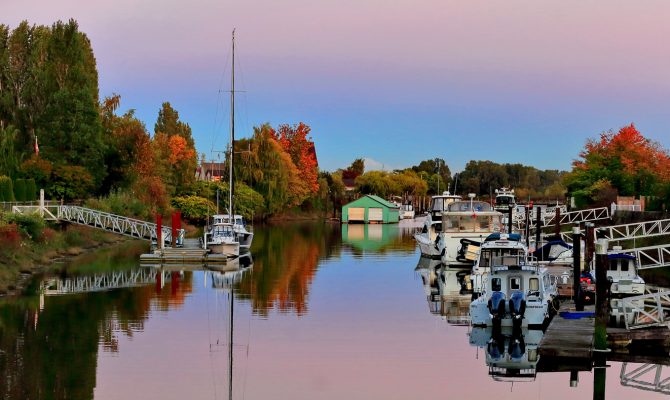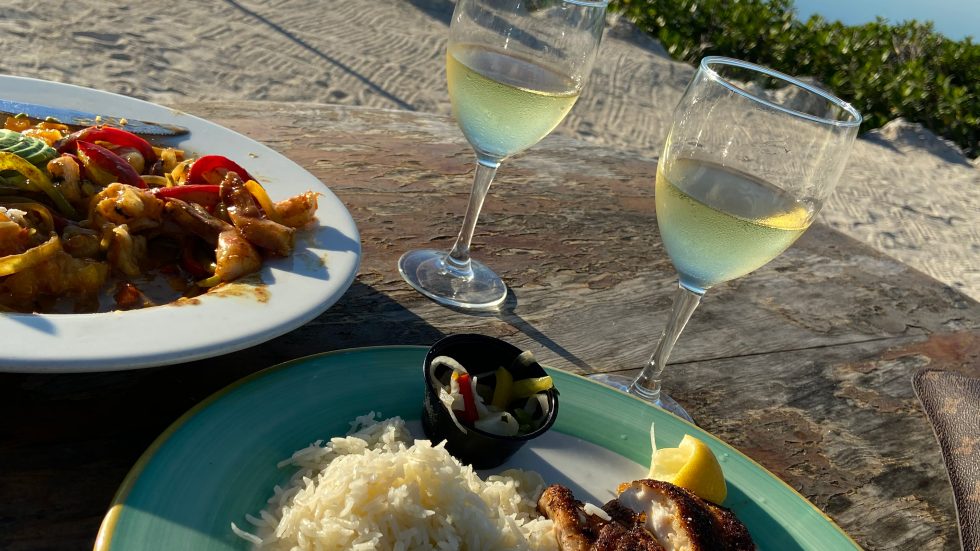Autumn On-Water Adventures
Because so many fair-weather boaters flee the water after Labor Day, one of the joys of late-season boating is the lack of boating pressure. You’ll notice it the moment you arrive at the boat ramp and find you may be able to pull right up to a launch lane without waiting in line. Once on the water, you’ll notice it’s quieter, with far fewer craft, which not only makes cruising easier but increases your odds at being able to enjoy prime fishing, swimming, skiing and picnic spots — perhaps even having them all to yourself.
Depending on your latitude and the landscape that surrounds your favorite boating destination, you may begin to notice a color change to the scenery ashore. Hardwood trees especially will start showing their true colors as days grow shorter and nights cooler, and many boaters anticipate their annual autumn “leaf peeping” cruises this time of year. In some areas, it’s popular among football fans to organize floating tailgate parties on the water, where they raft up and tune in to watch or listen to their favorite college and pro teams compete.
With cooler weather come more comfortable hiking conditions, and some boaters use their craft to access trails, while others can’t wait for fall’s more favorable air temperatures to allow them to more comfortably enjoy sleeping aboard their boats on cool autumn nights.
As for enjoying more traditional watersports, you may be surprised at how warm the water remains, even after the average air temperatures have dropped. You may be able to enjoy swimming, skiing and tubing longer than you would’ve imagined. And less overall traffic adds to tow-boaters’ peace of mind.
As for fishing, the action typically picks up about the time the waters get too cool for swimming. Many gamefish species get more active as the water temperatures abate each autumn and often return to shallow water, where they’re more accessible to anglers. Fish often feed heavily in the fall as well, putting on the weight needed to carry them through the lean winter months. All this spells excellent fishing action come autumn, which many fair-weather anglers miss out on.
Season-Stretching Apparel
Once the air and water turn cooler, you can don insulated apparel made to keep you warm on deck or in the water. Wet suits have come a long way since the “Sea Hunt” days, when Lloyd Bridges wore a thick layer of black neoprene to keep comfortable in the drink. Today’s wet suits and insulating water wear are available in a wide variety of fabrics, styles and colors designed for comfort across a range of water temperatures and activities.
On deck, boaters have an even greater variety of high-tech apparel made for thwarting wind, insulating and keeping the body comfortable while enjoying late season sights and activities. Advances in underwear, outerwear and “every wear” in between have made it both simple and stylish to stay dry and comfortable aboard and ashore.
Attractive Autumn Accessories
There’s a host of accessories available to make a boat more comfortable early and late in the season. Portable canvas options that can convert an open cockpit into a fully enclosed camper cabin in a matter of minutes are available for most boat models, either from the factory or as an aftermarket option, and panels of transparent isinglass can be custom-made to be temporarily placed in a variety of locations.
Portable heaters are an option as well, with several 12-volt models made for a marine environment available to warm the cabin or the cockpit of a cruising watercraft. Chemical heat packs are also an option for keeping warm afloat. Single-use and reusable versions are available in sizes and shapes made to be placed in coat pockets to keep fingers warm, sole-shaped to be placed in shoes to keep toes toasty or with adhesive to be placed on clothing over the lower back or neck to help keep your body’s core temperature at a comfortable level.
Safe Season Stretching
Cold isn’t the only condition that late-season boating can force you to confront. As the season wanes, many waterways exhibit their lowest water levels of the year. Boaters need to be aware of the water depth at all times and be on the lookout for underwater obstructions that might not have been a threat earlier in the year when water levels were higher.
The solitude that beckons many late-season offers boaters can become a liability in the event of a breakdown or other problem. Compared to the busier times of the season, this time of the year there may not be other boaters in the vicinity to turn to for assistance, and many areas cut back their on-water law enforcement presence once the primary boating season is over, so water patrol boats may be fewer and farther between. That makes it all the more important to make sure your boat and gear are in good working order, including your VHF radio and cell phone. If a late-season trip takes you to an area made remote by location or season, be sure to file a float plan with someone responsible ashore who will note if you are overdue and contact the proper authorities to come looking for you.
Finally, before loading everyone into the tow vehicle for a late season boat trip, make sure that your crew is aware of the cooler conditions you may face and that everyone is prepared to safely handle them — while enjoying what is sure to be a very special time on the water.




